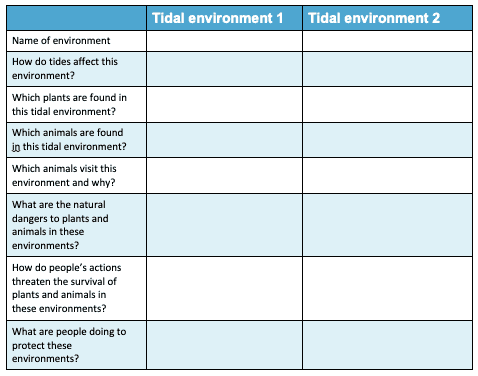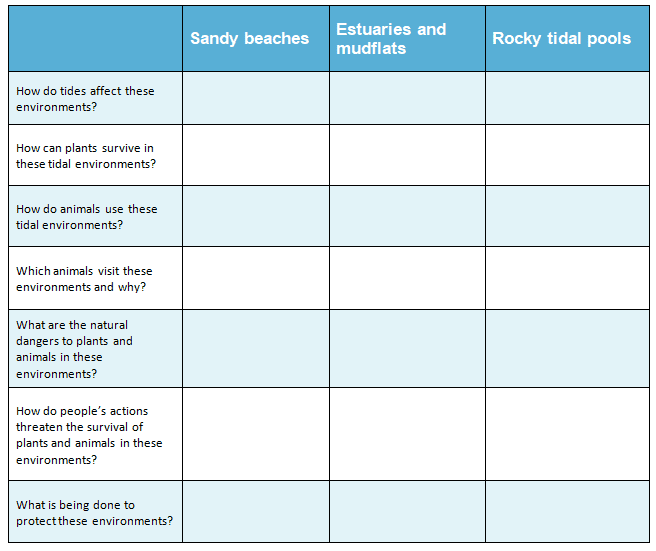Information for Teachers
Curriculum links
This investigation is linked to the following Grade 4 Next Generation Science Standards.
PS4.A: Wave Properties
Waves, which are regular patterns of motion, can be made in water by disturbing the surface. When waves move across the surface of deep water, the water goes up and down in place; there is no net motion in the direction of the wave except when the water meets a beach. (4-PS4-1)
LS1.A: Structure and Function
Plants and animals have both internal and external structures that serve various functions in growth, survival, behavior, and reproduction. (4-LS1-1)
ESS2.E: Biogeology
Living things affect the physical characteristics of their regions. (4- ESS2-1)
How to search the internet
1 Keep your request short
Fewer words will give a more accurate search.
2 Choose exactly what you want
For example: Arctic Circle Climate
3 Use quotes
Double quotes around a set of words tell the search engine to consider those exact words in that exact order without any change. For example: “Arctic Circle Climate”
4 Use the plus sign (+)
If you add a plus sign (+) between words, the internet will search for all the words. For example: migrate+birds+whales+mammal
5 Use the minus sign (–) to say what you don’t want
Use a minus sign (–) to show words you do not want to appear in your results. For example: if you search for burrowing animals and do not want mammals in your search, –mammals will exclude mammals. Note that you need to put a space before the minus sign for the word to be excluded.
6 Be very clear about what you don’t want
Part 1
Ask questions and define problems
After reading Living with the Tides, you may have many questions about the types of tidal habitats and the creatures that live there.
List your questions
- Compare your list with questions that others have.
- Choose a question you would like to investigate.
- You can work alone, with a partner, or in a small group.
You may want to choose one or more of these questions to investigate
Q1. What are the main types of tidal habitats?
Q2. How do waves and tides influence tidal habitats?
Q3. How do plants and animals survive in tidal habitats?
Q4. What is being done to protect tidal habitats?
Go to Part 2 Investigate →Part 2
Investigate
Do searches in the internet or in books or talk to people who can help to find the information you are looking for.
Your teacher may suggest suitable websites for further information.
Go to Part 3 Record data →Part 3
Record data
Find a way of recording your information that will allow you to see any patterns in the data.
Data Chart for Living with the Tides
 Download Chart
Download Chart
Go to Part 4 Organize, analyze, and interpret data →
Part 4
Organize, analyze, and interpret data
1. Look over the information you have gathered and the patterns you have found.
What do these tidal environments have in common? Why are they fragile?
2. Search for other patterns.
What might happen to these environments in the future? How can they be protected?
3. Makes notes about what you find.
Go to Part 5 Present and share →Part 5
Present and share
Look over all of the information that you have gathered in your investigation.
What are the most important ideas about tidal environments?
Make a chart showing the most important ideas.
 Download Chart
Download Chart
← Return to menu